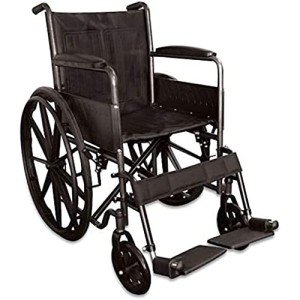Bonus Wide Bariatric Wheelchair With 24" Seat
Frame
Wheelchairs are normally produced in a basic width of 16" (narrow grownup), 18" (standard adult) or 20" (broad grownup). However, some wheelchair users require a seat width broader than these requirements. These extra wide bariatric wheelchairs are typically fitted by a professional and based upon the user's measurements.
In order to get the most comfortable and protected ride for guests, it is necessary that wheelchairs are effectively sized. This implies that the wheelchair must have the ability to accommodate the user's size while having the ability to navigate in tight spaces. This is why BriteLift offers tailored cars to transport wheelchair passengers. This consists of vans that can securely drive and maneuver large wheelchairs, permitting them to feel safe and comfy in every ride. This is the only way to offer the most effective transportation for wheelchair travelers.
Seat
Bariatric wheelchairs are bigger than basic wheelchairs and are designed to accommodate people who are heavier or wider. This extra wide bariatric wheelchair from Medline includes a 24" seat and a carbon steel frame with rust- and chip-resistant chrome plating. The wheelchair has tool-free push-button adjustable footrests and easy-to-clean vinyl upholstery. It can support up to 500 pounds.
When picking the right wheelchair width, it is essential to determine the user sitting normally on a flat surface area across their widest part of the lap which is typically their hips. It is also recommended that you use a yardstick rather than a determining tape as it tends to give a more accurate measurement. If the user will be using a winter season coat then an extra 2" ought to be included to the measurement of their seat width.
Weight Capacity
A bariatric wheelchair is normally larger and heavier than standard wheelchairs. This is why they require more careful maneuvering. Motorists need to be trained in managing these travelers. Moreover, bariatric self propelled wheelchair require to have enough space for these chairs along with ramps and wheelchair lifts. In addition, they need to understand how to arrange these trips beforehand.
When selecting the chair width, it is necessary to determine the user's largest point in the seat, which is typically the hips. Numerous wheelchair makers likewise use a yardstick that can be used to help with this measurement. When measuring an individual's width, it is best to take the measurement straight across and not wrap the tape around their hips which can give a false reading.
In many cases, the largest part of an individual's thighs may be broader than their hips so this must be thought about when choosing the chair width. In these instances, it is in some cases needed to add an extra 2" to the chair width.

In general, the weight capacity of a bariatric wheelchair must not be exceeded under any scenarios or severe injury might result. When using the chair, always make sure that it is on a stable and level surface with front casters pointing forward and wheel locks engaged. In addition, never lean or shift the center of gravity while being in the chair.
